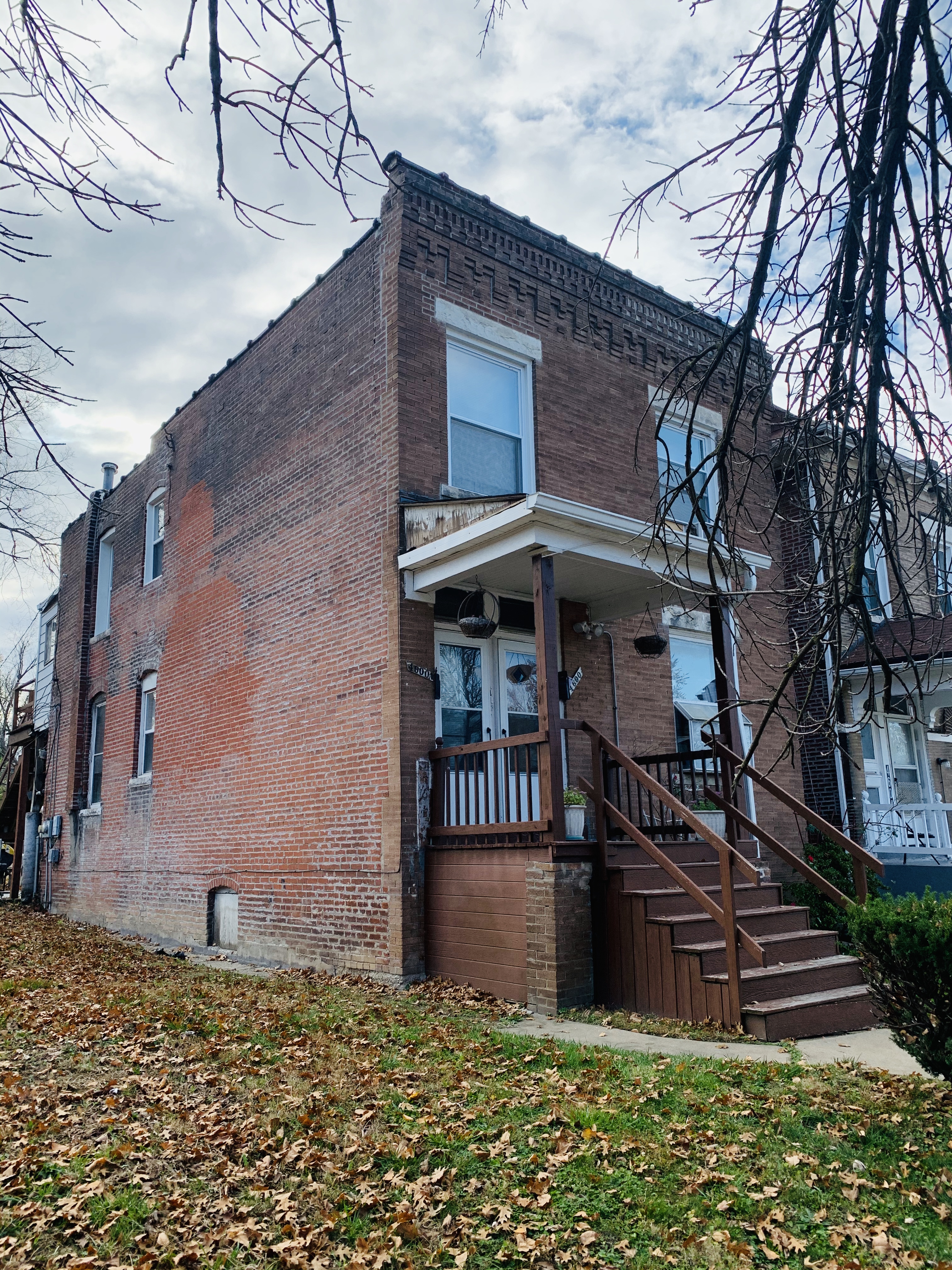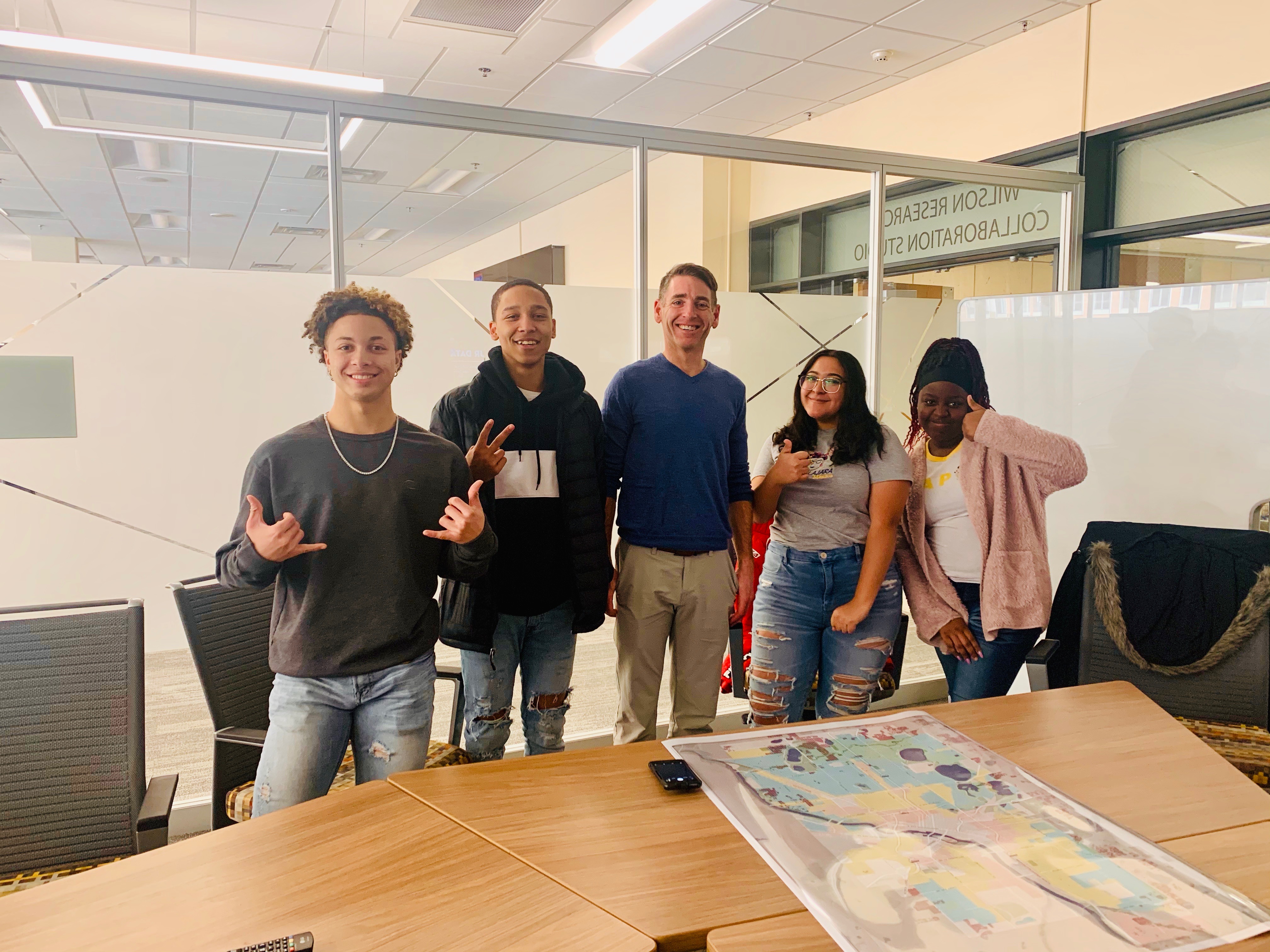November 23, 2020
This month's blog post is part of a series on pedagogy and community-engaged learning. Check back in the coming months for more notes on what we’ve learned through our work in classrooms and communities. January will feature a discussion of the educator materials that have come out of our classroom work.
In the summer of 2018, I started working with K-12 educators on Mapping Prejudice lesson plans. We discussed all kinds of strategies. Some were experiments that didn't quite land, and others were fabulous ideas still waiting to be realized. Some, I still use every time I enter a classroom (or zoom).
Before coming to the Mapping Prejudice project, I worked in education. I had a teaching mantra: "tell me and I forget, teach me and I may remember, involve me and I understand." Usually, I don't go out of my way to quote Benjamin Franklin, but he was spot on with this. I have seen it play out with students and experienced it myself countless times. But I would revise his version slightly to "tell someone else and they will forget, teach someone else and they may remember, involve someone else and they will understand AND you will learn from them."
We see this all the time in our volunteer sessions with adult community members. The labor that builds our map is not sourced from interns or undergraduate students, as is the case in many traditional university research projects. Our data is created by community members volunteering their time. Regular folks work together to collaboratively assist in identifying and transcribing deeds for our covenant database. We host community workshops where volunteers learn how to identify racially restrictive deeds and contribute to our project. Often we lead with a presentation on the history of racial covenants before having participants dive into the transcription process. Despite our expository primer, it's still common to hear volunteers gasp and announce, "wow, this is really racist," when they come across a racial restriction themselves. Reading these deeds has a real impact.
Volunteer transcription sessions are doing more work than merely building our map. Though the transcription process is critical to the project's ability to map racial covenants, we realized early on that there was more going on in our volunteer sessions than simple data collection. Participants gain a deeper and more personalized understanding of the geography of white supremacy when they are involved in identifying covenants themselves.
I want students to experience that impact. But one of the first things I learned from students is that the standard spiel that works for a group of adult volunteers is not optimal for K-12 students.

September 2018, a class of students from Great River School on a learning retreat at Bdote, identify racially restrictive covenants in deeds. (Photo credit: Marguerite Mills)
With students, it's not about facilitating the creation of our map data, it's about providing a learning experience. It's about that lightbulb moment volunteers get when they read their first covenanted deed—the moment where covenants stop being statistical and begin to feel personal. But I hadn’t thought about how students even related to the idea of a property deed. I was close to 30 when I first guest taught on Mapping Prejudice, and almost all of my knowledge about property records I learned from working on the project. I found out quickly that the concept of a property deed is not immediately accessible to K12 students.
The idea that a policy kept people of color from purchasing a home doesn't necessarily hinge on understanding exactly what a property deed is. However, understanding the impact of racially restricting land ownership does require some knowledge of private property as a system. For example, I found that when I paid little attention to the particulars of how a property deed works, folks came away with the idea that in the past, there were laws that kept people of color from owning property. I am not one for pedantry, but this is not what we mean when we talk about racially restrictive covenants. Covenants are legally binding agreements, but they are not laws. Part of what made covenants possible in the first place -- and what made them so difficult to stop -- was their relationship to the private property system and the ways constitutional law protects private transactions.
Students don't have experience buying a house. They don't have a reference point for property or contract law. I had to think of a similar experience that students understood. While students don't buy homes, most have seen or participated in retail consumerism. "A receipt is essentially your agreement with the store," I tell students. It details what you purchased, how much money you were charged for the items, and it serves as proof that the transaction happened -- that you took possession of the items and paid (or agreed to pay) for them. These receipts also have a fine print section. When you accept a receipt at the register, it signifies that you have entered into an agreement with the store. Sometimes you can find the fine print directly on the receipt, or nowadays directions to visit the store's website where you will find pages of details about the return policy. These details include how many days you have to return your items, the type of things you can't return, what proof of purchase or identification you need to make a return, etc.
A deed is like a receipt in that it records a transaction and demonstrates ownership. Covenants in a deed are like the fine print on a receipt. They are part of the comprehensive agreement behind the transaction. Only a covenant doesn't say how you can return a property; it dictates what you can and cannot do with the property. Some covenants were racial, and they dictated who you could and could not sell, lease, or allow to occupy your property based on race.
The specific fine print on a receipt is not a law, but it is governed by contract law. If it is not followed, you or the seller would theoretically have standing to sue. If a store refused to uphold its return policy, you could challenge them in court. Similarly, covenants are not laws, but are governed by contract law. They are legally binding agreements that hold the involved parties to a set of terms. Breaching these terms can (and did) lead to litigation.
There is, however, a key distinction between retail agreements and property agreements., When you buy something from Target--say a potted plant-- they have no control over what you do with it. There are no terms of use written into your receipt for your new peace lily. But what if the Target receipt said you couldn't sell, rent, or give your plant to a person of color? What if it said that the sales agreement ran with the pot, and no matter how many times it got sold -- even if the plant died and you put a new plant in the pot -- if it was ever sold to a Black person, that transaction would be a breach of the initial agreement? This would mean that Target would have legal standing to sue anyone who attempted to sell that pot to someone who wasn't white. If successful, Target would take back the pot and have the United States legal system's full support to do so.
This is, of course, ridiculous. This is not how receipts work.
But it is precisely how racial covenants work.
Students understand this breakdown. When I came up with the receipt analogy, it was purely to bridge students' knowledge gap. But as I started talking more about covenants in terms of a receipt, I gained a firmer grasp of the absurdity of racial covenants myself.
In addition to a digestible understanding of covenants as a form of contract law, this line of explanation creates more fertile ground for introducing students to private property history. It opens up space for discussing the significant legal challenges to racial covenants. Students have a far easier time grasping the legal logic of historic supreme court cases like the Shelley v. Kraemer when I set them up with a foundational understanding of how property law works.

The “Shelley House.” In 1930, the Shelley family fled racial violence in Mississippi and made their way to St. Louis. They bought this house in 1945, but they were unaware that a covenant placed on the home in 1911 prohibited the sale of the property to anyone of the "Negro or Mongolian race." But their white neighbors knew about the fine print on the Shelley’s deed, and they were able to bring the Shelley’s to court for breach of covenant. (Photo credit: Marguerite Mills)
The unanimous 1948 Shelley v. Kraemer ruling was pivotal in the ultimate demise of the practice of racial covenanting. But that's not because the verdict found racially restrictive covenants unconstitutional. It held that on their own, racially restrictive covenants do not violate the Fourteenth Amendment, which guarantees equal protection under the law. The court ruled that as long as racial covenants were kept to the realm of private property agreements, they were fine. Only when enforcement of the contract violation was carried out by the court or the state that racial covenants became unconstitutional.
So, in our receipt example, under the Shelley v. Kraemer ruling, Target would be within their rights to write a racial restriction into your receipt regarding who you can give your plant to. As long as they did not rely on the government to enforce the racial restrictions, they were just fine. This explains why we continue to see covenants written into deeds years after the Shelley v. Kraemer case. This is essential for students to understand if we want them to grasp what is meant when we say that racial covenants were not made wholly illegal until the passing of the Fair Housing Act in 1968.

Student’s from Robbinsdale Armstrong Highschool visited the Wilson Library University of Minnesota for a lesson on racial covenants in February of 2020. (Photo credit: Marguerite Mills)
Engagement with students and community members offers a window into the challenges and opportunities inherent in a project that seeks to engage a wide variety of audiences. The act of meeting people where they're at is not only a pedagogical challenge; it is also an opportunity for us as "experts" to think about our research in new ways. A dialectical relationship can play out if we, as researchers and educators, open ourselves to producing knowledge in, and with, a community instead of becoming self-appointed experts about a community. By being open to new and various approaches when I go into a classroom or a community, I often leave with a new understanding of the topic myself. It can be easy to rely on established ways of discussing racial covenants and housing injustice. But when we involve students and think of them less as an audience and more as a collaborator in understanding the information, that is when the real lightbulbs moments can happen.